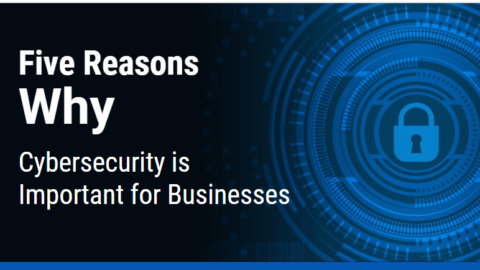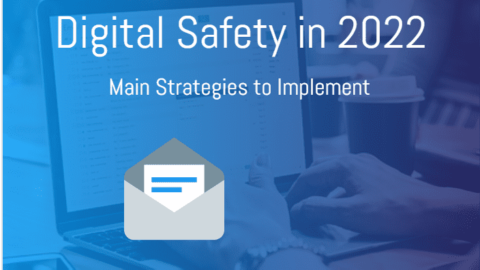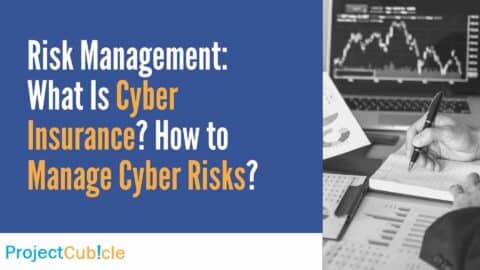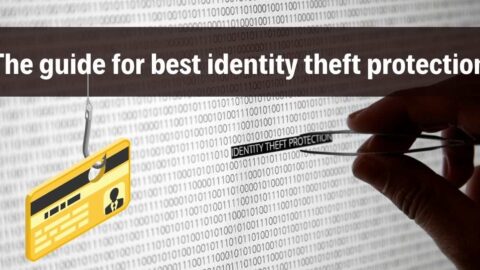How Cybersecurity and Risk Management Are Related ?
While the rapid digital transformation has brought forth several benefits for modern businesses, it has also resulted in an increase in cyber risks. Today, one thing is for sure for all businesses, regardless of their industry. They need a strong cybersecurity and risk management strategy to protect their valuable data and infrastructure.
Table of Contents
Without a sound cybersecurity risk management plan, the consequences can be dire. Especially considering that the global cost of a data breach is $4.35 million. This post will walk you through how cybersecurity and risk management are related.
What Is Cybersecurity?
Cybersecurity is the practice of safeguarding internet-connected devices, networks, systems, and programs from malicious digital attacks. Cyberattacks typically aim to access, alter, or destroy sensitive information, interrupt normal business operations. Or extort money from victims using ransomware. According to a Check Point study, global cyber attacks rose by 28% in the third quarter of 2022 compared to the same period last year, and the weekly number of attacks per organization is around 1130. Given the worsening state of cybersecurity, businesses need to implement sound cybersecurity to keep their organizations safe. Some businesses go beyond and implement zero trust network. To know what is zero trust network access, click here.
What Is Risk Management?
Risk management identifies, assesses, and controls legal, financial, security, and strategic risks to an organization’s earnings and capital. These risks could emerge from various sources, including legal liabilities, strategic management errors, financial uncertainty, accidents, and natural disasters. Suppose an unforeseen event catches your organization off guard. The repercussions can range from minor overhead costs to heavy financial burdens. Or, in the worst-case scenario, closure of business. An organization can minimize risks by implementing a consistent, systematic, and integrated risk management strategy to identify, manage, and mitigate various risks.
Ways Cybersecurity and Risk Management Are Related
Cybersecurity and risk management are among the best ways of safeguarding against various risks. So what is the relationship between cybersecurity and risk management? One thing that they share is that they are both plans for safeguarding a business’s assets and are typically created using similar steps. In fact, cybersecurity and risk management are usually combined to create a cybersecurity risk management plan. Here are the steps for creating the plans.
1. Identify the Most Important Digital Assets
The first thing to do when creating a cybersecurity risk management plan is to identify the organization’s most valuable assets. These may include computers, mobile devices, networks, systems, and other digital assets that may be targeted by threat actors. Determine which of your digital assets are more likely to become targets of cybercriminals, either due to their value or vulnerability. Create a list of these assets with the most vulnerable and critical at the top of your list. This list will come in handy when determining which digital assets are riskier and should be focused on more.
2. Audit Your Data and Intellectual Property and Conduct a Cyber Risk Assessment
A data audit is one of the most vital steps in creating a cybersecurity risk management plan. An audit of your data and intellectual property will help you determine the exact type of data you collect, where you store it (cloud or on-premise), the persons who have access to that data, and the cost of recovering it in the event that it gets lost or stolen. During the audit, be sure to identify digital assets like applications and software.
Upon completing the audit, perform a cyber risk assessment to identify the different types of information assets, such as software, hardware, and customer data, that could be affected in the event of a risk occurring or a cyber incident.

3. Assess Your Security and Threat Levels, and Establish a Cybersecurity Risk Management Committee
Determine the posture of your business in terms of cybersecurity and potential risks/threats by performing a security assessment and risk assessment. Security assessments usually focus on analyzing hardware, storage infrastructure, and networks. While threat assessment focuses on who may want to attack your business and the threat vectors they may employ.
You should then establish a cybersecurity risk management committee, usually under the leadership of the Chief Information Security Officer (CISO). The CISO may appoint various teams and individual job functions to manage and mitigate potential risks your organization may encounter. The committee should monitor existing risks and continually the cybersecurity needs of the business as it expands.
4. Automate the Risk Mitigation and Prevention Tasks
Considering that 95% of data breaches result from human error, creating a human firewall by automating the risk mitigation and prevention tasks is vital when creating a cybersecurity and risk management plan. Automating these tasks saves time and money, minimizes human error, and creates efficiency in the workplace. While most organizations rely on data analytics and automation tools for risk mitigation and prevention, not all these software are effective. As such, you should conduct extensive research to choose an easy-to-use solution. And it should leverage real-time data to analyze current and emerging risks.
5. Create an Incident Response Plan and Educate Your Employees on Cybersecurity Best Practices
An incident response plan refers to a set of instructions specifically tailored to addressing various cybersecurity threats, including data breaches/loss, power outages, cybercrimes, and other incidents that may negatively affect your normal business operations. These plans help your employees to more effectively identify, respond to, and recover from various cyber events.
Another way you can strengthen your defense in breach prevention is by availing cybersecurity awareness training to your employees, so they know what actions to take when they come across a given threat. The chances of your cyber risk management plan failing are high if your employees aren’t properly educated on cybersecurity best practices and policies. Companies must prioritize cybersecurity awareness training and focus the programs on addressing threats they may encounter, such as phishing, malware, and ransomware.
In today’s dynamic environment filled with all sorts of risks, cybersecurity and risk management are not a nice-to-have but a must-have. By following the steps outlined above, you’ll create a sound cybersecurity risk management plan.
Visit our website to learn more about cybersecurity and risk management and get valuable insights on other topics.

Valencina has more than 25 years of experience as an IT consultant with a great focus on enterprise application UI/UX. She has experience working across multiple industries, acting both in an advisory role, as well as hands on in the technical build of solutions. Valencina is the co-founder and COO of Nitera Training Services.










